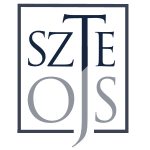Fluorescence induction reveals organization of antenna and reaction center in photosynthetic bacteria
Abstract
The photochemical phase of the bacteriochlorophyll fluorescence induction generated by rectangular shape of laser diode illumination was measured in different organization levels {whole cell, chromatophore and isolated reaction center protein) of carotenoidtess mutant of purple photosynthetic bacterium Rhodobacter sphaeroides R-26.1. While the antenna containing species showed large and positive variable fluorescence (fj relative to the constant (initial) fluorescence (Fa) {FJF^ ~ 4.5 in whole ceil), the isolated RC had smaller and negative change (FJF - -0.6). The variable fluorescence of the ceils increased steadily in the function of the age of the cultivated bacterium: FJF0 - 2 for young ceils and FJF0 - 4.5 fór old ceils while the rise time of the fluorescence induction remained constant (- 2 ms). In chromatophore, 7 times higher rate was measured than in isolated reaction center under identical experimental conditions. The results obtained under different conditions are interpreted by an extended version of the Lavergne-Trissl model where the simultaneously measured fluorescence inductions from the antenna and the RC can be separately expressed.Downloads
Download data is not yet available.
Downloads
Published
2007-01-01
How to Cite
Gerencsér, L. and Maróti, P. (2007) “Fluorescence induction reveals organization of antenna and reaction center in photosynthetic bacteria”, Acta Biologica Szegediensis, 51(1), pp. 27–32. Available at: https://abs.bibl.u-szeged.hu/index.php/abs/article/view/2555 (Accessed: 8 December 2025).
Issue
Section
Articles



